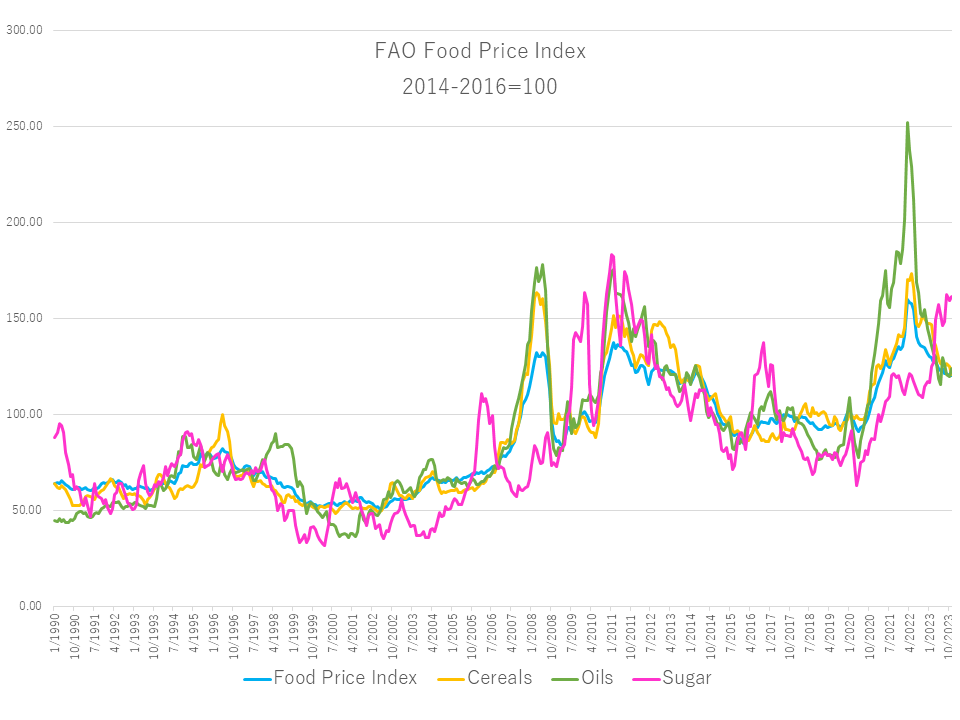Pick Up
917. November 2023 World Food Price Index

917. November 2023 World Food Price Index
On December 8, the Food and Agriculture Organization of the United Nations (FAO) released its World Food Price Index for November 2023, which averaged 120.4 points, unchanged from the previous month and 14.4 points (10.7%) lower than a year earlier. Increases in the vegetable oil, dairy and sugar price indices were offset by decreases in the cereal and meat price indices.
The Cereal Price Index was 121.0 in November, down 3.0% from the previous month and down 19.4% from a year earlier. Overall, prices for coarse grains such as corn, sorghum, barley, and rye fell 5.6% from the previous month. The decline reflects a sharp drop in world corn prices due to increased sales by Argentine farmers and seasonal supply increases due to an upward revision of U.S. production conditions. International wheat prices also fell by 2.4% in November due to increased seasonal supplies from Argentina and Australia and competitive pressure from Russia. Meanwhile, the FAO All Rice Index remained stable overall, reflecting contrasting price trends across producing countries and market segments.
The Vegetable Oil Price Index increased by 3.4% month-on-month in November after declining for three consecutive months through October. The increase was due to increases in the palm oil and sunflower oil price indices, which offset a decline in soybean prices. International palm oil prices increased by 6.0% month-on-month due to seasonal supply constraints in major producing countries and aggressive buying by major importing countries, while international soybean prices declined slightly, reflecting weak international demand despite expected lower production in Brazil.
The Sugar Price Index reached 161.4 points in November, up 1.4% from the previous month and 41.1% from a year ago. The increase reflected concerns that global exports may fall short due to the prospect of lower production following El Niño-related dry conditions in two major exporting countries, Thailand and India. In addition, delays in shipments from Brazil and the strengthening of the real against the U.S. dollar also contributed to higher international sugar prices, although strong production in Brazil and low international crude oil prices limited upward pressure on prices.
Contributor: IIYAMA Miyuki (Information Program)
